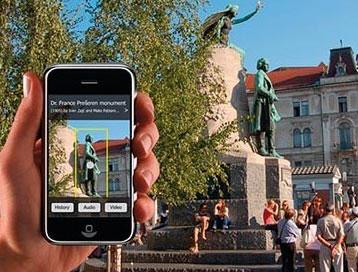Here's a cool thing from ReadWriteWeb. The site started a new thing to repost items that deserve a second mention. (Honestly, I think someone over there found a creative way to get a day off, but whatever.)
The re-post today is actually an interesting item called, ?Hyperlinking the Real World (Redux).? Using technology from the MOBVIS project in Europe, camera phone users will be able to snap buildings, cars, monuments and even ads, and then get info about the objects directly on their screens.
Isn't Google Street View already doing this? Sort of. It IDs your location first (through GPS or cell tower triangulation), or requires you to plug in coordinates, and then displays pictures of the area. MOBVIS identifies your environment via camera and, presumably, figures out your location.
Actually, this would work well in conjunction WITH Google. Forget Streetview vans running around capturing streets (and getting pulled over by the cops). The info could be aggregated from users? cell phones as they snapped their pics. 
According to RWW, this technology could feasibly hyperlink all the real-life objects in the world and annotate them ?like a real-life semantic web.? That's kind of cool.
The technology's not perfect, though. People take photos at all sorts of weird angles and imperfect lighting conditions. These won't always match up with the beautiful images in the MOBVIS database. But, say researchers, the algorithm (developed in Slovenia by the University of Ljubljana) is pretty good. Actually, pretty awesome. In real world tests, the system worked to detect the right building 80 percent of the time. And it was never wrong. Sometimes MOBVIS didn't know, and therefore didn't return a result. But whenever one did come up, it was always the correct link. Can't say the same for Google.